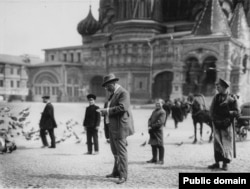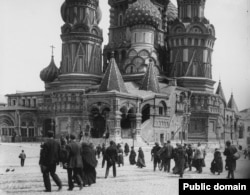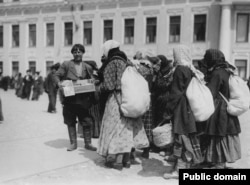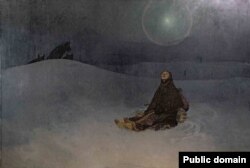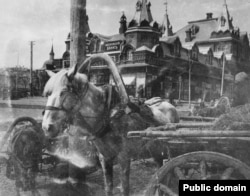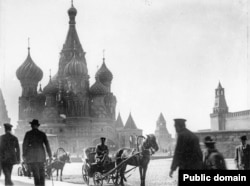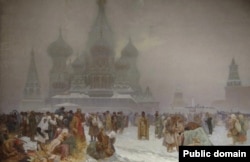Fascinating photographs made by the Czech art nouveau master Alphonse Mucha capture Russia on the cusp of revolution.
This photo is one of a handful that survive from Mucha’s trip to Russia as part of his research into his painting series the Slav Epic.
Mucha, who is best known for his elegant art nouveau advertisements, was also a skilled photographer who based many of his paintings on studio photo portraits.
Russia in 1913 was widely discussed after the ruling Romanov family celebrated their 300th year in power in February that year.
During his research visit, Mucha met with people who remembered the moment serfs were freed. The abolition of serfdom took place under Tsar Alexander II in 1861, more than half a century before Mucha’s Russia visit.
One of the most significant images made during Mucha’s trip is this scene of a beggar at an unknown location. In his famous painting Woman In The Wilderness, Mucha depicted a strikingly similar old woman.
The model for the painting was the artist’s wife, Maruska, but it is likely that the original inspiration for the character is the elderly Russian beggar Mucha photographed in 1913.
According to the Mucha Foundation, the painting “may have been Mucha’s response to the terrible sufferings endured by the Russian people after the Bolshevik Revolution, which culminated in the Great Famine of 1921. In this painting, a Russian peasant woman, [symbolizing] the suffering of the nation, sits quietly with a gesture of acceptance of her inevitable fate. But the star shining above her indicates hope and spiritual salvation.”
Mucha’s work was already well-known in Russia when he arrived. In 1907, an exhibition of his work was held in the country.
The resulting painting from Mucha’s trip to Russia features St. Basil’s Cathedral seen from exactly the same angle as in this photo.
The painting is described as showing “a subdued crowd of Russian peasants looking on anxiously as the official reads the edict for the abolition of the serfs. St. Basil’s [Cathedral] and the Kremlin beyond are barely discernible through the thick shroud of fog which captures the uncertainty of the moment.”
Despite Mucha’s love for Russia, the country is conspicuously absent from his final painting in the Slav Epic. The painting, which depicts a triumphant and free Slavic people stepping into the future, was made in 1926 after Russia had already suffered under Vladimir Lenin and his communist revolutionaries, and the despotic rule of Josef Stalin was about to begun.
This post was originally published on Radio Free.

